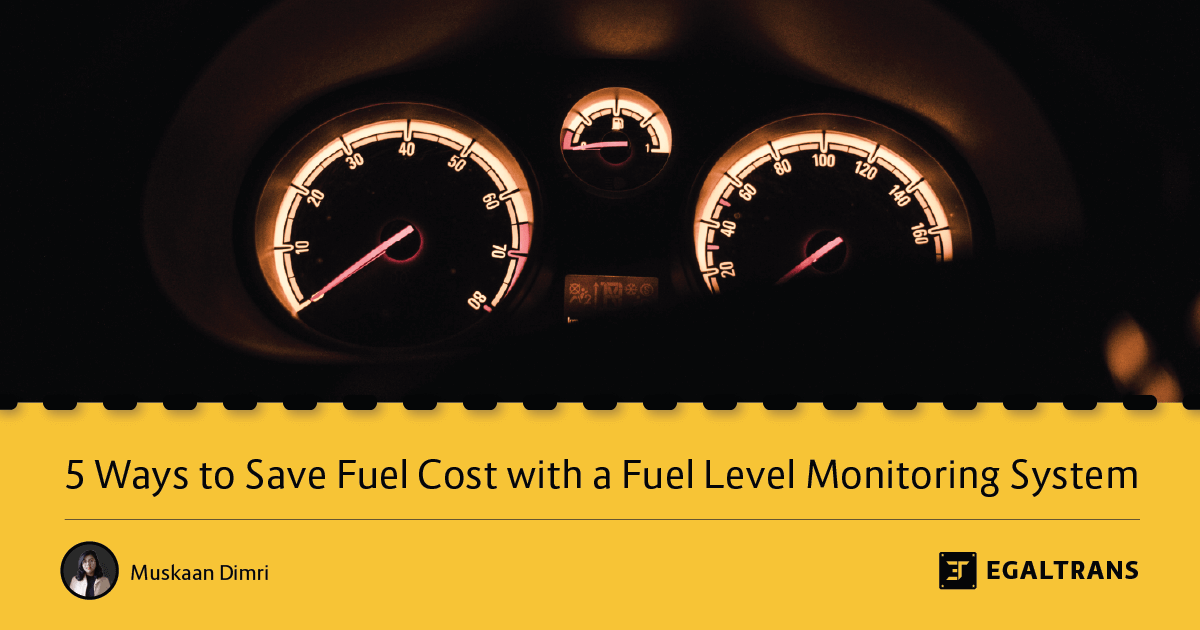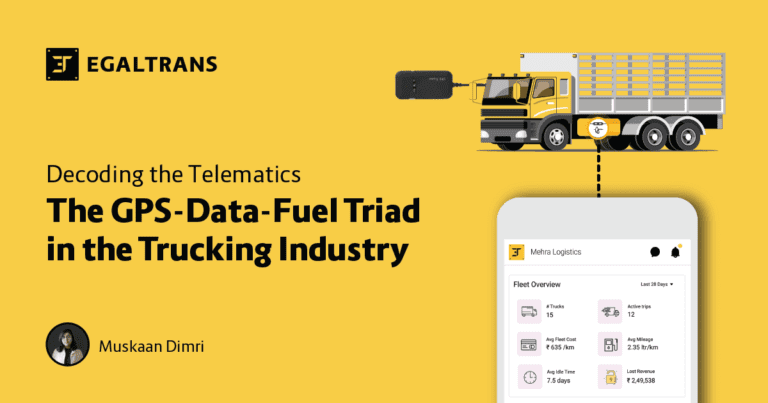The largest vehicle-based expense for fleets per mile is fuel. A commercial heavy-weight truck can easily consume more than Rs. 30 lakhs of diesel fuel per year which is more than 50% of the total operating cost. No doubt, rising fuel costs always have a dramatic impact on the overall cost, making it essential for truck owners to improve fuel economy. There are many reasons for fuel price rise, the most important factor being imbalance in oil production and demand. If you’re a company owner or a fleet manager asking “How can I reduce my fleet fuel costs?,” then this article is a must read for you to learn about fuel level monitoring system.
What is a Fuel Level Monitoring System?
Fuel monitoring system is the technology that has been designed to track real time fuel level, consumption, refilling to optimize fuel efficiency, prevent drainage and fraudulent activities. Fuel monitoring is essential in the truck fleet management system in the logistics sector, as this solution becomes part of the vehicle fuel tracking system so that cost per journey per truck can be improved. Fuel tracking is necessary nowadays in bigger fleets for many reasons such as :
- Preventing fuel wastage
- Tracking fuel expenditure
- Improve the efficiency of fuel tanks
- Maintain accurate records
- Influencing Driver Behavior
Ways to Save Fuel Cost with a Fuel Level Monitoring System
1. Introducing Fleet Management Software
Paper processes and whiteboard meetings are outdated in this world of technology, though they are used in many places but now these methods are unrecognised and bring very little to no efficiency. Fleet management software acts as a bridge between field and offices. With a robust application drivers, workers and fleet owners can update any information with just a few clicks. This not only eliminates the long receipt-keeping process but also introduces a more accurate method of record keeping. Fuel filling, its location and real time second by second updates is easily reported via such softwares without engaging the truck drivers.
2. Tracking Driving Behavior
Driver behavior has an immense impact on your fuel bill. If the driver is found to be speeding it may lead to hefty fines and even serious accidents. However, speeding is also a massive waste of fuel, for every five kilometers that your drivers travel over 50 kms per hour, you pay an additional 20% per liter of fuel. For example if a truck goes beyond 120 km/h then it uses 20% more fuel as compared to driving at 60-80 km/h. Similarly idling is yet another driver behavior which can lead to a heavy loss of fuel. The data received with the help of a fuel monitoring system can be used to influence truck driver’s behavior. Those who are found speeding or idling should be trained to improve the productivity of the fleet and similarly the driver can be appreciated or given incentives for their fuel-saving methods, this will promote a good work culture and will also help the drivers to believe that they are trusted.
3. Checking Tire Pressure
Vehicle mileage can be improved up to 0.6-3% if the fleet’s tire pressure is checked on a regular basis. For bigger fleets it is very important to invest in fuel efficient tires which have low rolling-resistance that demands less energy than standard tires to propel them in the direction the vehicle is traveling. Incorrect tire pressure increases tire rolling resistance which impacts the entire vehicle’s fuel consumption. Driving the truck with tire pressure of 5600 kilopascal will increase fuel consumption by 4%. Tire sensors are emerging which are directly linked to the fuel management system, in case of a wear and tear or a deflation in the tyres it is reported via sensors directly to the fleet manager.
4. Implementing Fuel Cards
Fuel cards allow drivers to pay for the fuel at regular fuel stations at a discounted rate. The fuel cards come with a number of advantages, including no credit card fees, wholesale pricing, no administrative fees, and many more. Large fleet owners will be able to budget fleet spending, spot purchasing abnormalities, and stop card fraud with the use of fuel management software that integrates with fuel cards. This will not only help in analyzing the fuel usage but will also help in cutting fuel cost when necessary. The fuel card helps in gathering information regarding exhausting fuel purchases along with the driver’s information linked to that particular fuel card.
5. Adopting Preventative Maintenance
Numerous mechanical issues, such as the amount of fuel consumed, mileage, the quality and safety rating of your engines, the price of fuel, and repair services, can have an impact on fuel consumption. Regular maintenance of your trucks will not only prevent parts from unexpectedly breaking down, but will also guarantee that they are in good condition and are operating as efficiently as possible. A major part of preventative maintenance is changing oil to higher quality motor oil which will improve the fuel mileage by as much as 1–2%.

Fuel tracking methods have been on an uptick since the last decade and have really proved to be beneficial for the fleet owners. With the rising prices of diesel and fuel, it has become very important to save fuel in one way or another. Of course how to save fuel varies from person to person and individual situation. But combining the above mentioned tips to your daily fleet routine will help you notice a reduced fuel cost and better fuel efficiency.





